Is Iona Island Worth Visiting?
Absolutely. Visiting Iona feels like stepping into a living postcard. This small island off the southwest coast of Mull is steeped in history, spirituality, and natural beauty. Whether you’re drawn by its ancient abbey, its pristine beaches, or its peaceful atmosphere, Iona offers a rare kind of tranquility that’s hard to find elsewhere in Scotland.
Tourists often describe Iona as a place that feels otherworldly. There are no crowds, no traffic, and no commercial noise, just the sound of waves, seabirds, and the occasional sheep. For those seeking a slower pace, meaningful experiences, or a connection to Scotland’s spiritual roots, Iona is more than worth the journey.
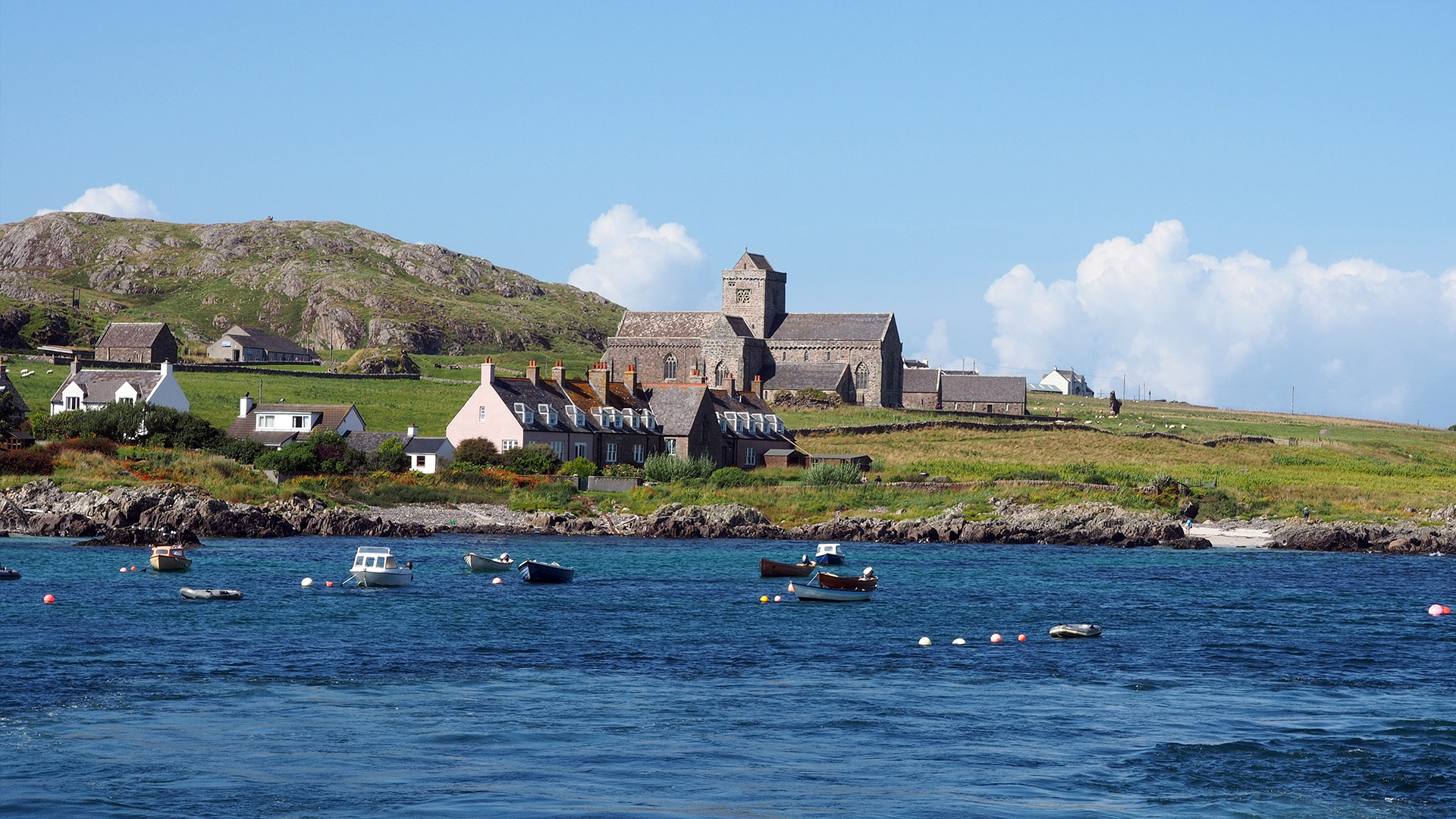
What Is Iona Famous For?
Iona is most famous for its role in early Scottish Christianity. In 563 AD, Saint Columba arrived from Ireland and founded a monastery that became one of the most influential religious centers in Western Europe. The Iona Abbey, rebuilt in later centuries, still stands as a powerful symbol of faith and pilgrimage.
Beyond its religious significance, Iona is renowned for its natural beauty. The island’s white sandy beaches, turquoise waters, and wildflower-strewn meadows attract artists, writers, and nature lovers alike. It’s a place where history and landscape blend seamlessly, offering inspiration at every turn.
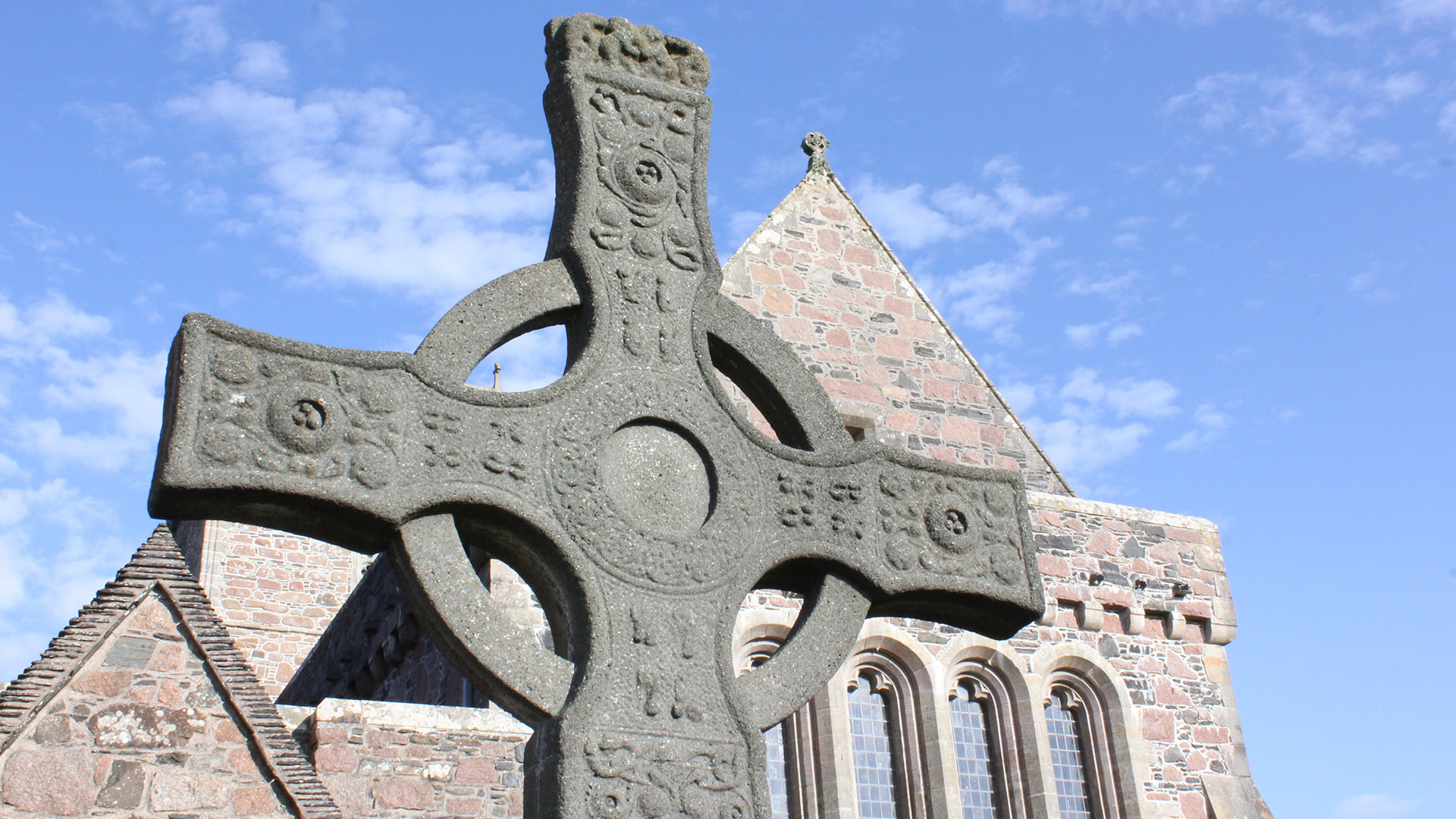
Who Is Buried on the Isle of Iona?
Iona is believed to be the burial site of over 60 Scottish, Irish, and Norwegian kings. Among the most notable is King Macbeth, made famous by Shakespeare. The ancient burial ground near the abbey, known as Reilig Odhrain, is steeped in legend and reverence.
While not all graves are marked or confirmed, the site remains a powerful reminder of Iona’s historical importance. Walking among the weathered stones, visitors often feel a deep connection to the past. It’s a humbling experience that adds depth to any visit.
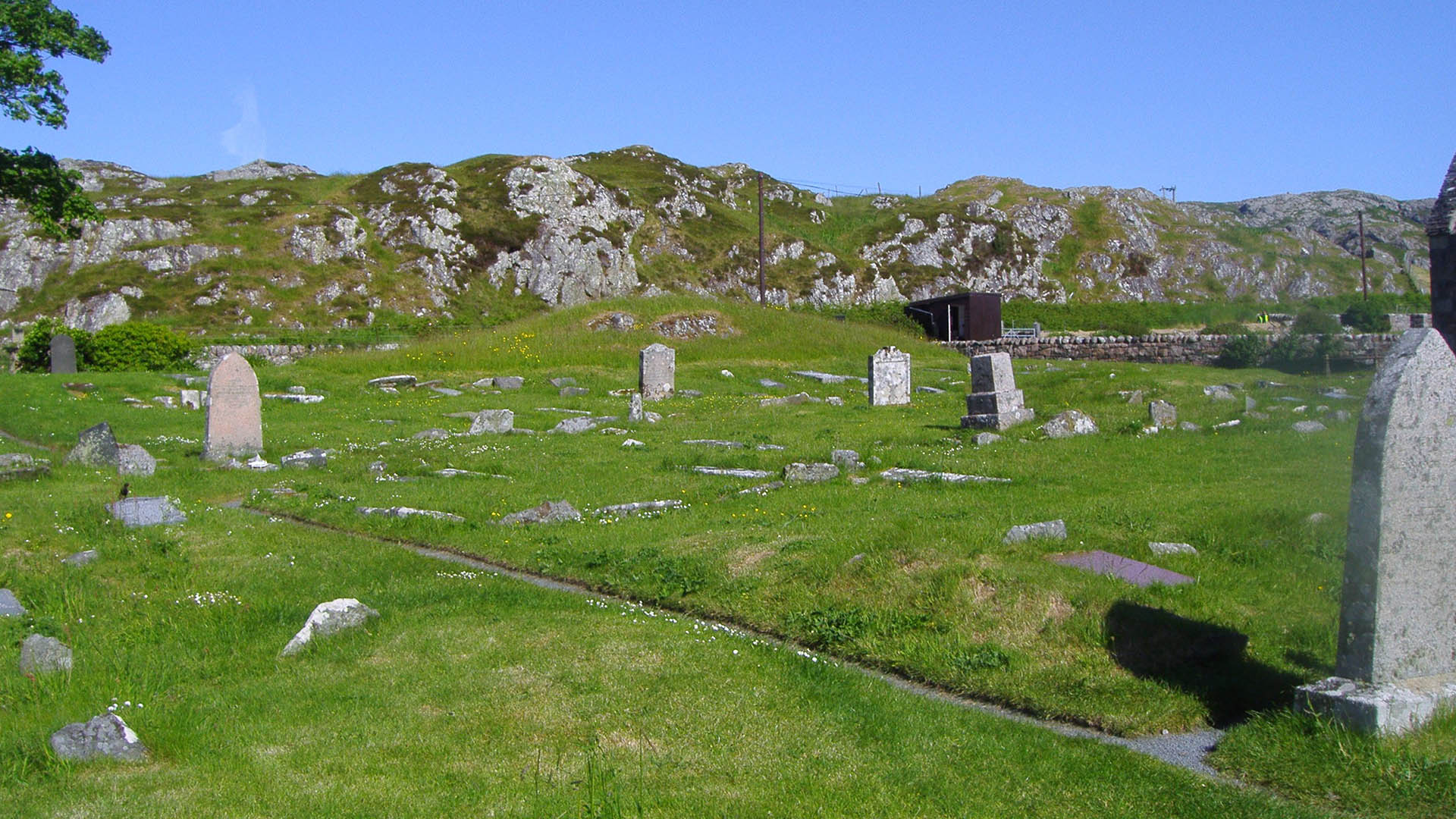
How Long Is the Ferry from Mull to Iona?
The ferry from Fionnphort on Mull to Iona takes about 10 minutes. It’s a short but scenic crossing, offering views of the Sound of Iona and the island’s rugged coastline. Ferries run regularly throughout the day, especially in the summer months.
Despite its brevity, the journey feels like a transition into a different world. As you leave Mull behind, the sense of anticipation builds. Many visitors say that even this short ferry ride adds to the magic of arriving on Iona.
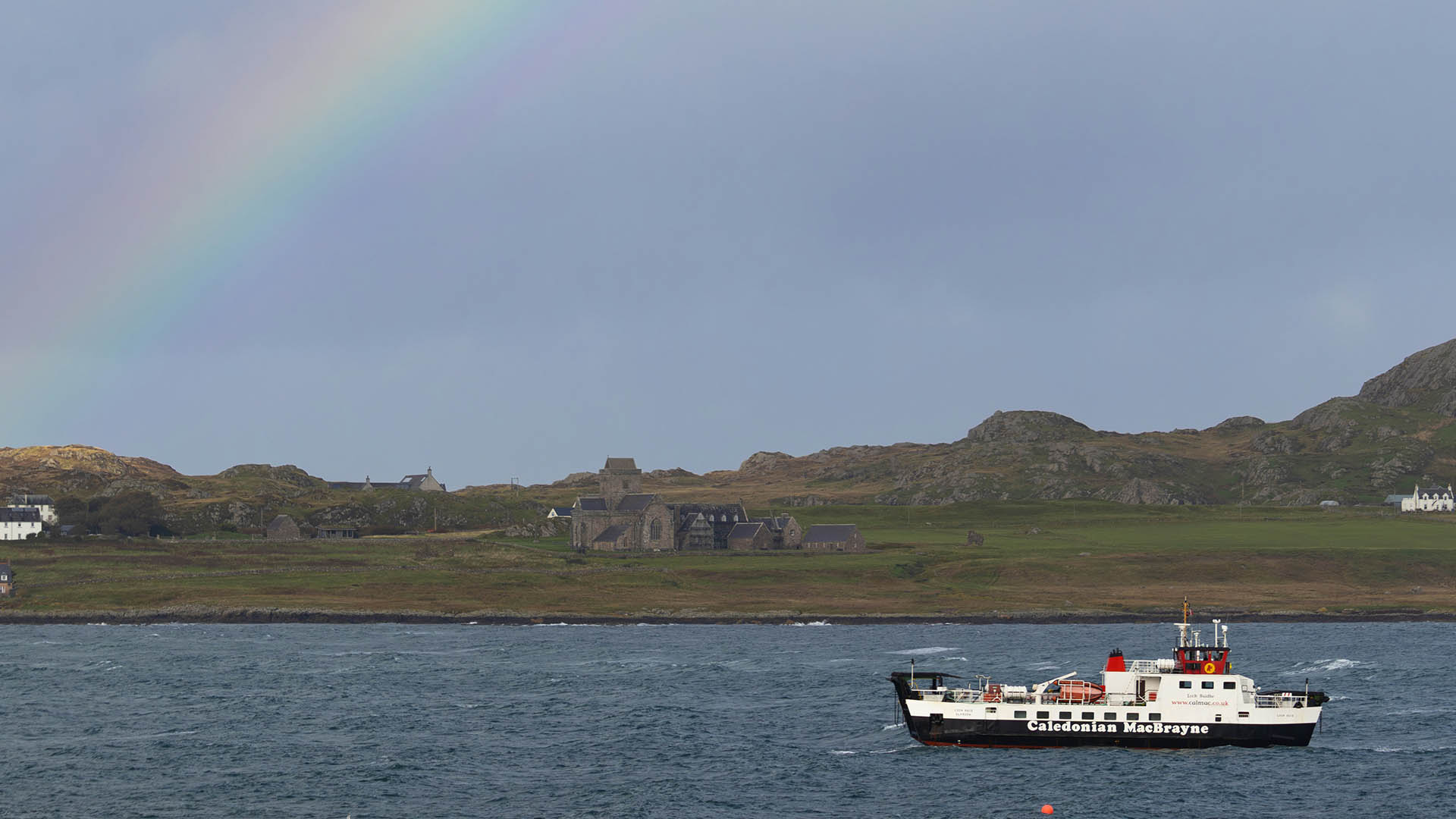
Can You Walk Around Iona in a Day?
Yes, and that’s part of its charm. Iona is just 1.5 miles wide and 3 miles long, making it ideal for a full-day walking tour. You can explore the abbey, stroll to the north beaches, visit the Heritage Centre, and even climb Dun I, the island’s highest point.
Walking Iona in a day allows you to absorb its quiet beauty at your own pace. There are no cars to worry about, and the paths are well-marked. Whether you’re a casual walker or a seasoned hiker, the island offers a gentle yet rewarding experience.
Can You Take a Car Onto Iona?
Generally, no. Visitors are not permitted to bring cars onto Iona. The island is car-free for tourists, which helps preserve its peaceful atmosphere. Only residents and service vehicles are allowed, and the ferry from Mull does not accommodate visitor vehicles.
This restriction is actually a benefit. Without traffic, Iona remains quiet, safe, and environmentally friendly. Most visitors find that walking or cycling is more than sufficient for getting around, and it adds to the sense of escape.
Can You Stay Overnight on Iona?
Yes, and it’s highly recommended. Staying overnight lets you experience Iona after the day-trippers have left, when the island becomes even more serene. There are several accommodation options, including guesthouses, B&Bs, pods and small hotels.
Evenings on Iona are magical. Sunsets over the water, quiet walks along the beach, and the chance to stargaze without light pollution. If you’re looking for a truly restorative getaway, an overnight stay is the way to go.

How Much Does It Cost to Go to Iona?
Costs vary depending on your travel choices. The ferry from Fionnphort to Iona is relatively inexpensive, usually under £5 for a return ticket. However, getting to Mull itself via ferry from Oban and transport across Mull adds to the overall expense.
Accommodation, meals, and activities on Iona are modestly priced, but it’s wise to book in advance, especially in summer. While not a budget destination, Iona offers excellent value for the depth of experience it provides.
How Much Time Do You Need on Iona?
A full day is enough to see the main sights, but two days or more allows for a deeper experience. With more time, you can explore the island’s quieter corners, attend a service at the abbey, or simply relax and soak in the atmosphere.
Many visitors say that Iona isn’t just about ticking off attractions. It’s about slowing down. Whether you stay for a few hours or a few nights, the island has a way of making time feel less important.
What Do People Do at Iona?
Visitors come to Iona for reflection, exploration, and connection. Popular activities include visiting the abbey, walking to the beaches, hiking Dun I, and browsing local crafts. Some attend spiritual retreats or workshops hosted by the Iona Community.
Others simply come to unwind. Reading on the beach, sketching the landscape, or chatting with locals at the café. These quiet moments often become the most memorable parts of the trip. Each year in July, the Sound of Iona Music Festival brings live performances to the island, adding music and celebration to visitors’ experiences.
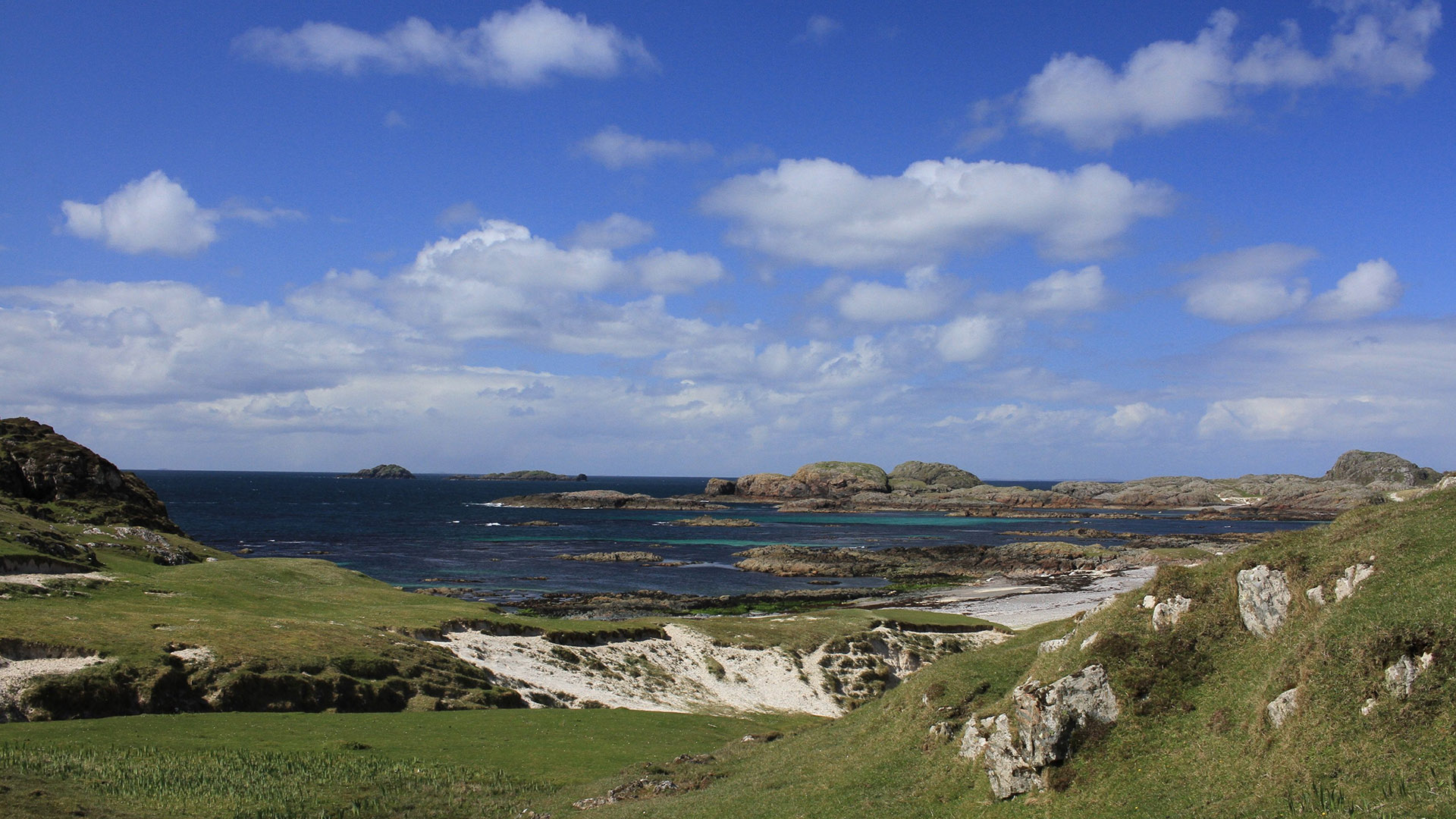
Are There Midges on Iona?
Yes, midges can be present during the warmer months, typically from late May to early September. These tiny biting insects are common across the Highlands and Islands, especially in damp, still conditions.
To avoid discomfort, bring insect repellent and consider wearing long sleeves in the evening. That said, Iona’s coastal breezes often keep midges at bay, and many visitors report fewer issues here than in other parts of Scotland.
When to Visit Iona?
The best time to visit Iona is between May and September, when the weather is mild and services are fully operational. Summer offers long daylight hours and vibrant wildflowers, while spring and autumn provide quieter experiences.
Winter visits are possible but come with limited ferry schedules and fewer amenities. If solitude is your goal, the off-season can be deeply rewarding. But for most tourists, late spring to early autumn is ideal.
How to Get Around on Iona?
Walking is the primary mode of transport on Iona. The island’s compact size and lack of traffic make it perfect for exploring on foot. Paths are well-maintained, and distances between key sites are short.
Some visitors bring bicycles, which can be useful for reaching the more remote beaches or simply enjoying a leisurely ride. Either way, getting around is easy, peaceful, and part of the island’s charm.
Are Dogs Allowed on Iona?
Yes, dogs are welcome on Iona, and many visitors bring their pets. The ferry allows dogs, and the island’s open spaces are ideal for walking. Just be mindful of livestock and follow local guidelines.
Some accommodations also accept dogs, though it’s best to check in advance. With its gentle terrain and relaxed pace, Iona can be a wonderful place for both humans and their four-legged companions.

